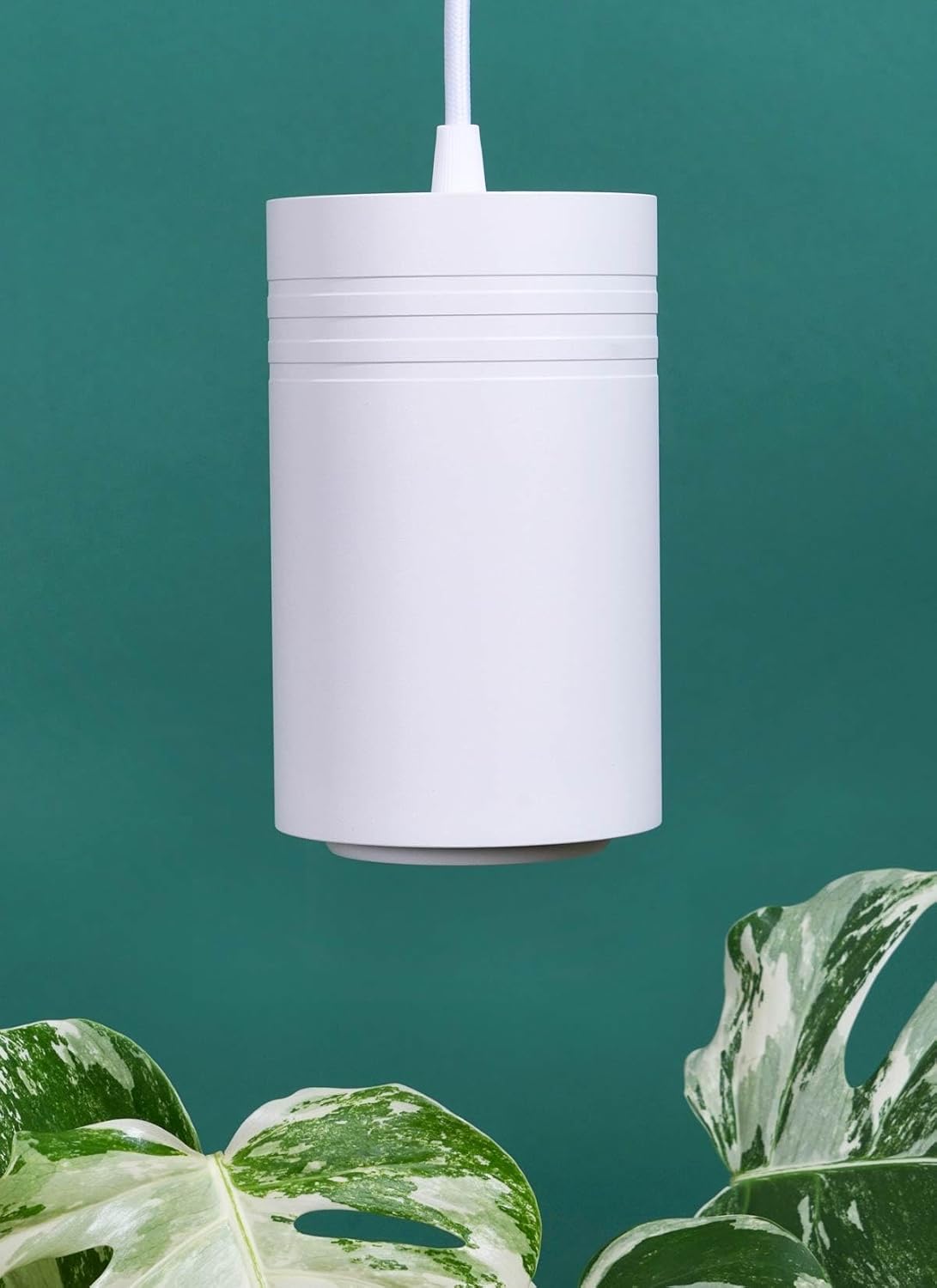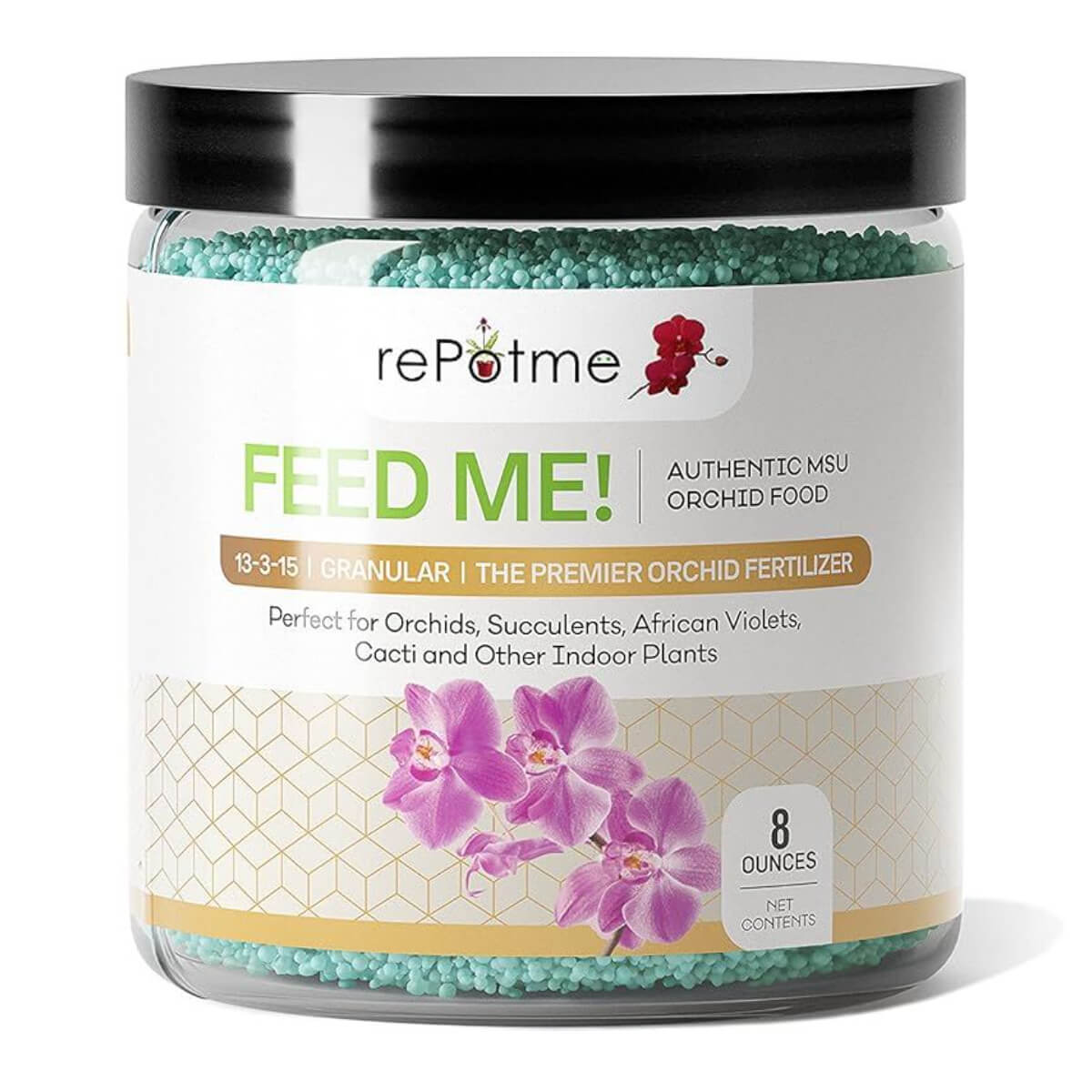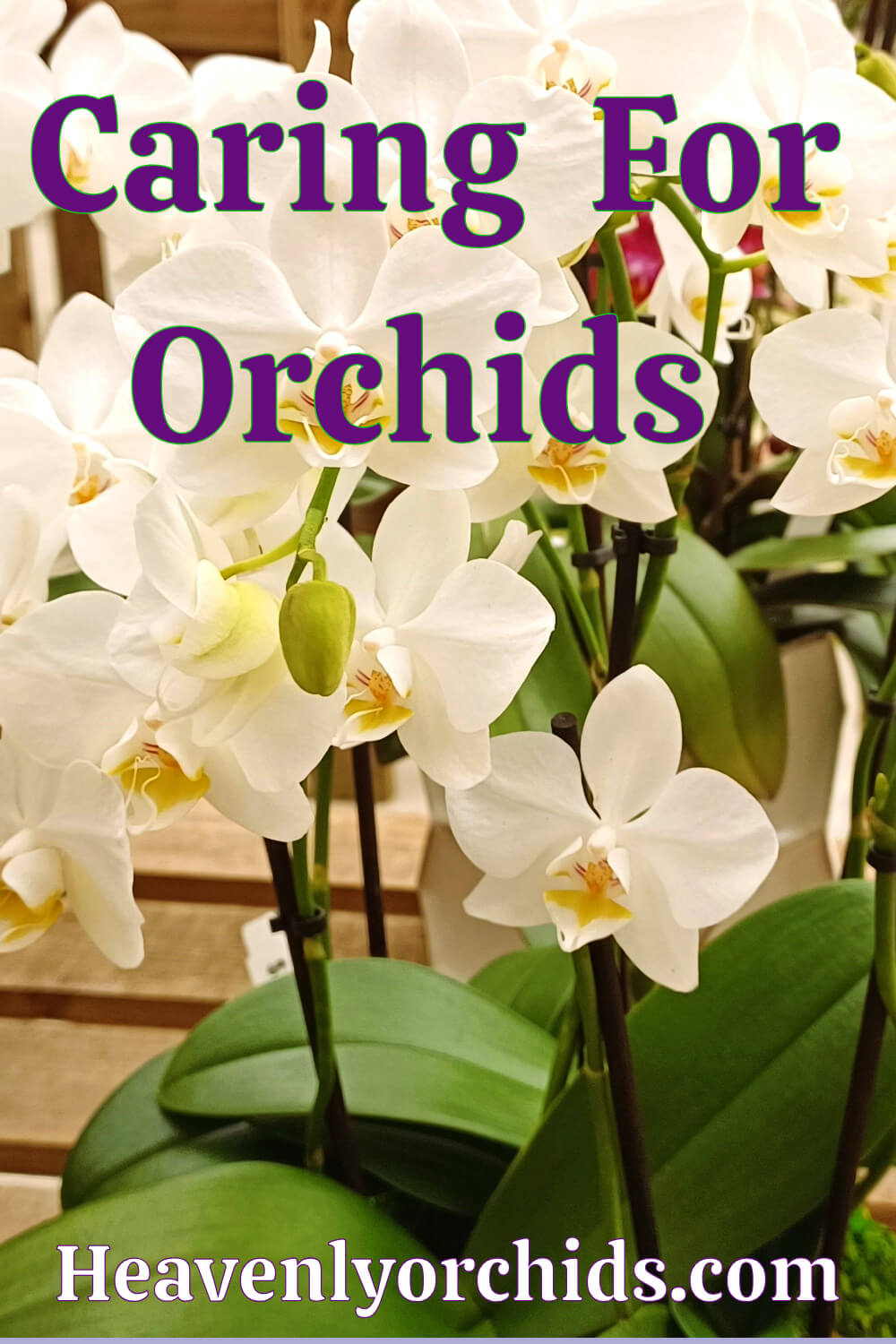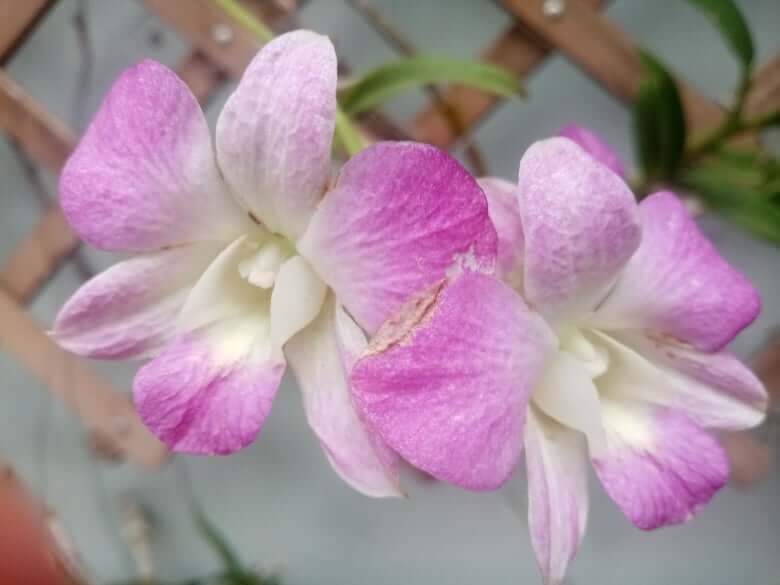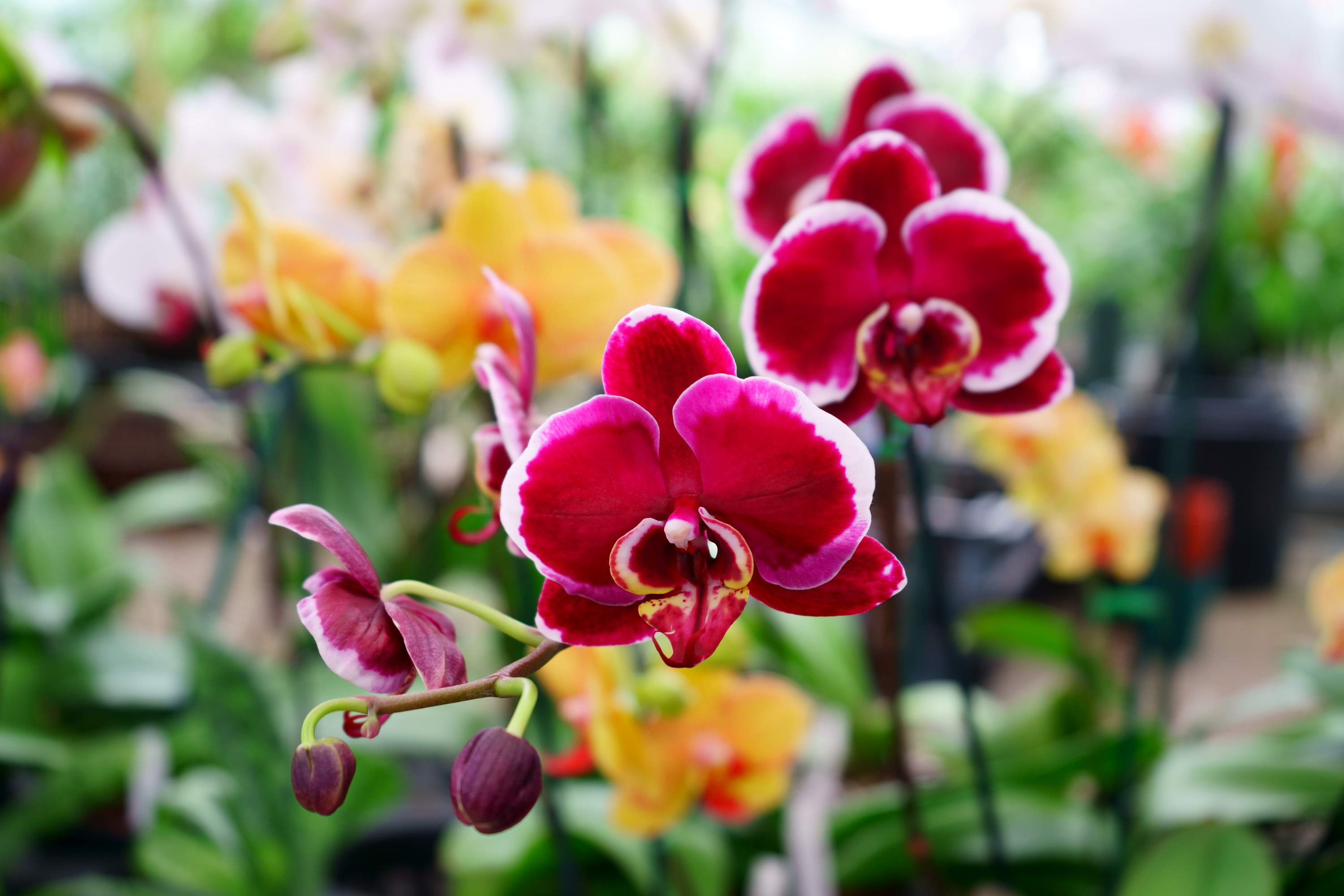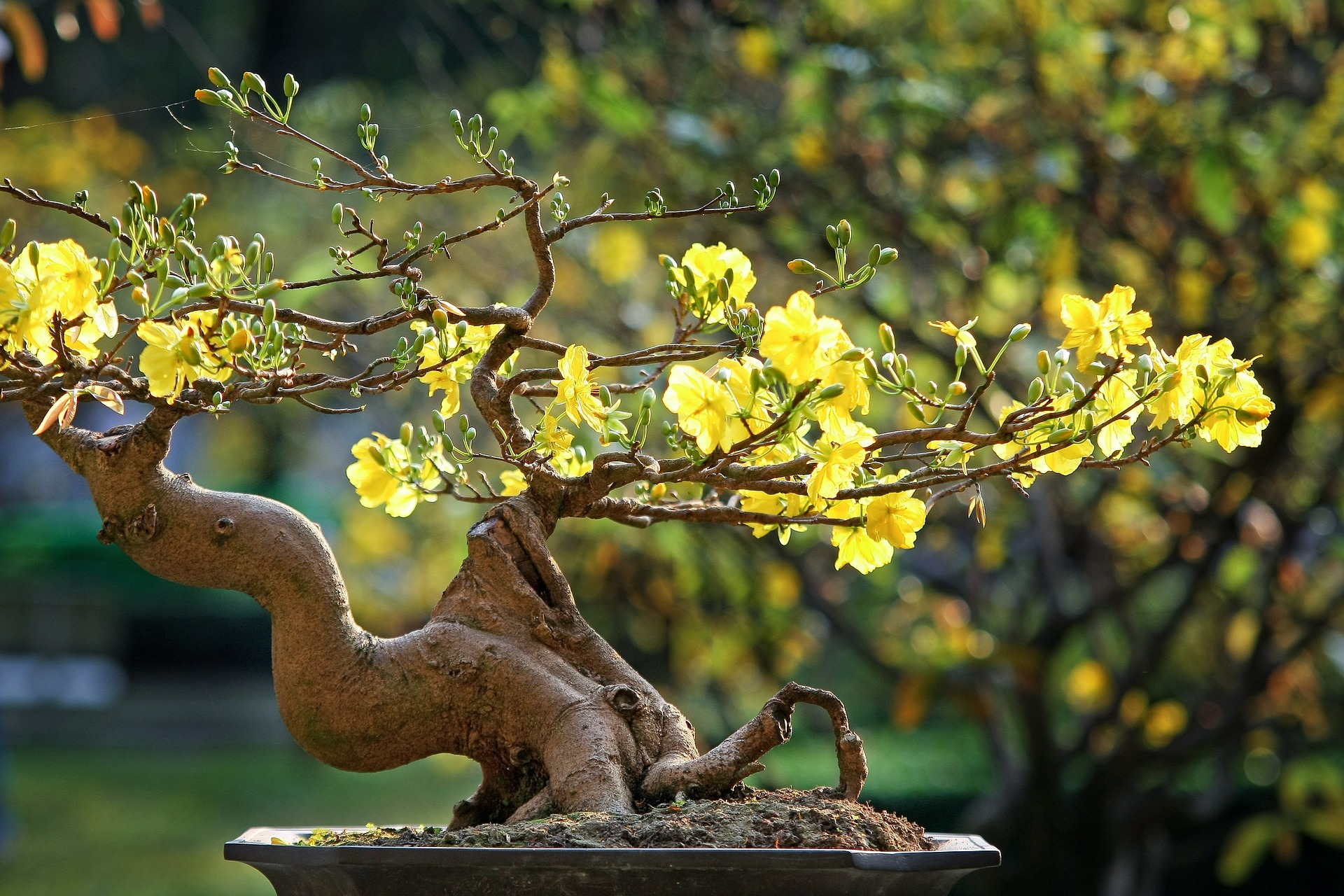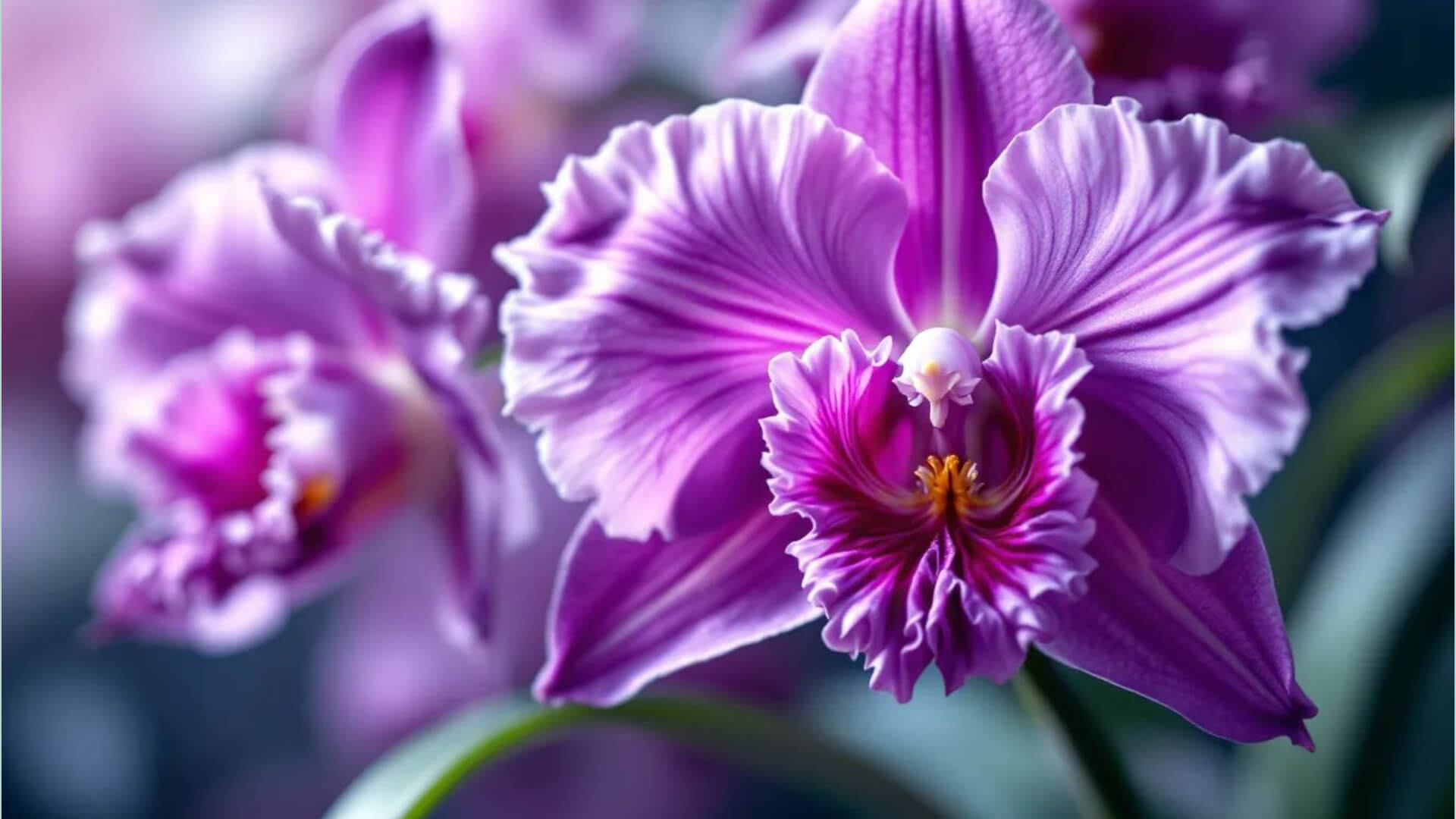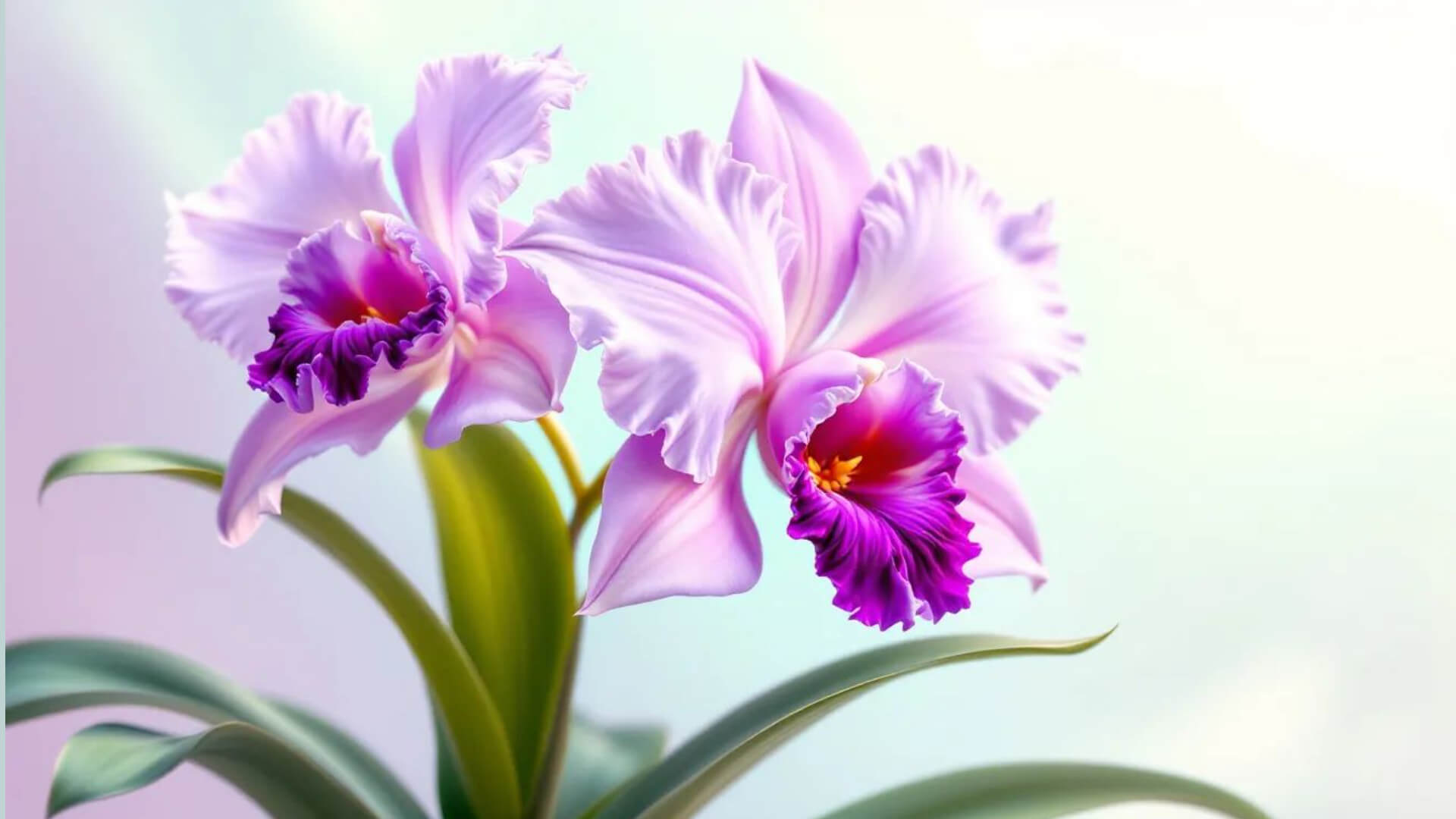Unlocking the Secrets of Caring for Orchids: Your Guide to Growing These Exotic Beauties with Ease
Orchids are the crown jewels of the plant world—exotic, elegant, and endlessly captivating. Each flower is a masterpiece of asymmetry and balance, unlike any other flower in nature. Their labyrinthine contours and vibrant colors can transform any space into a tropical paradise. But here’s the thing: caring for orchids doesn’t have to be intimidating. In fact, with the right guidance, it can be an incredibly rewarding experience. Whether you’re a seasoned plant enthusiast or a curious beginner, this guide will show you how to master the art of caring for orchids. From lighting and watering to humidity and pest control, we’ll cover everything you need to know to grow stunning orchids that thrive. Plus, we’ll introduce you to innovative products that make orchid care easier, more effective, and even enjoyable.
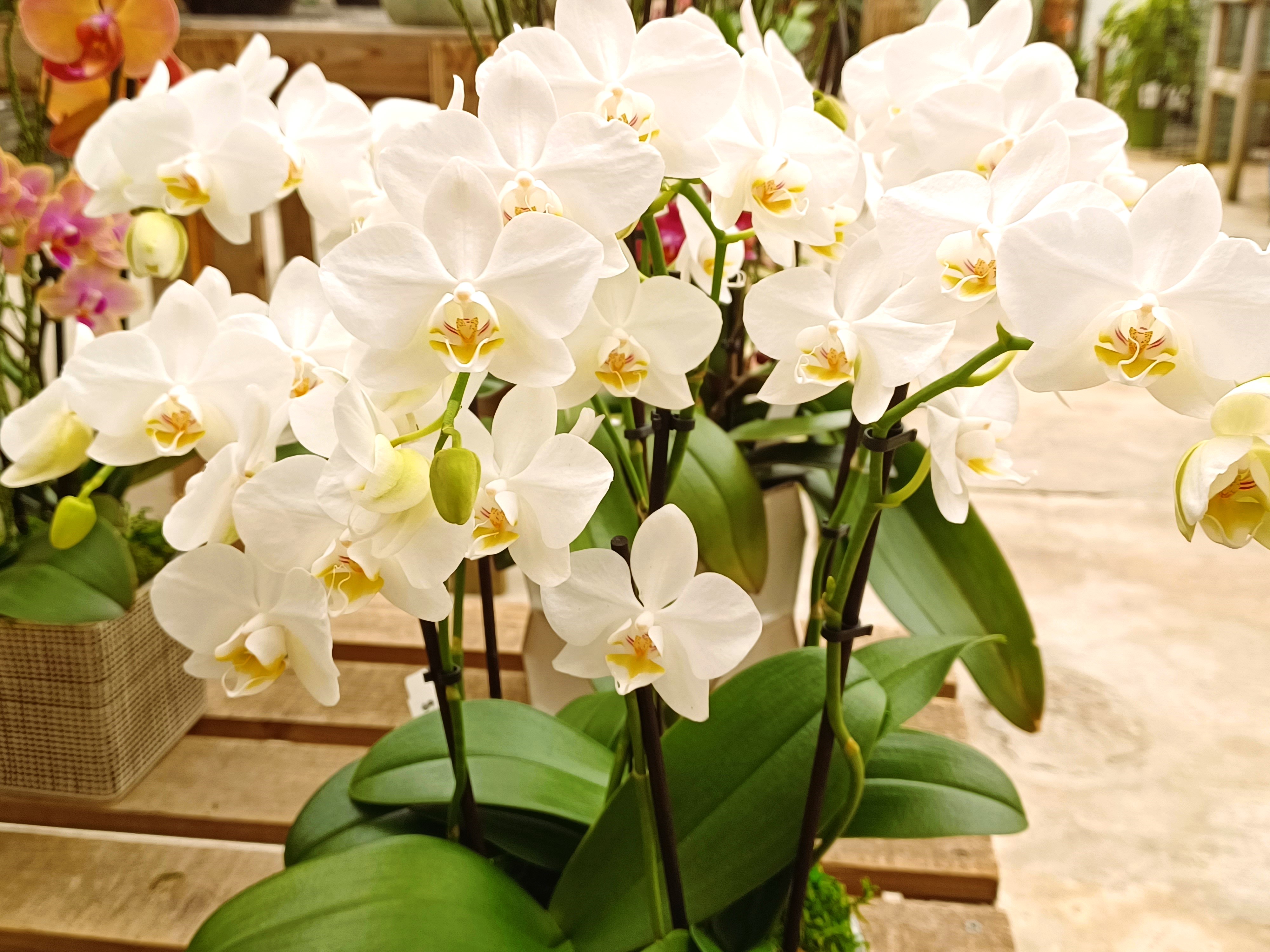
We are an Affiliate! We hope you find this information useful. Just so you know, we may collect a share of sales or other compensation from the links on this page. Thank you if you use our links, we really appreciate it.
Grow Thriving Orchids! Sign Up for Exclusive Care Tips & Tricks!
Why Orchids Are Worth the Effort
Caring for orchids is more than just a hobby—it’s a journey into the world of exotic beauty. Orchids are one of the largest and most diverse families of flowering plants, with a wide range of shapes, sizes, and habitats. They offer an endless array of beauty, from the timeless elegance of the Phalaenopsis to the bold, cascading flowers of the Vanda, with some varieties like the Vanda Amnesiana boasting an intoxicating fragrance. While they may seem intimidating at first, the rewards of caring for orchids are immense. Imagine your home filled with lush, blooming orchids—each flower a testament to your dedication and skill.

VIVOSUN VS2000 LED Grow Light with Samsung LM301 Diodes & Brand Driver Dimmable Lights Sunlike Full Spectrum Panel Fixture
Light Up Their World: A Guide to Orchid Lighting Needs
Light is the cornerstone of caring for orchids. Without it, they can’t photosynthesize, grow, or bloom. Orchids thrive in bright, indirect light, which can be achieved by placing it close to a window as long as direct sunlight is filtered or shaded. If your window receives intense sunlight—especially south-facing windows, which tend to get the hottest sun—use sheer curtains, blinds, or an outdoor tree to diffuse the light.
Direct sunlight can scorch their leaves, while too little light can stunt their growth. Different orchid genera have varying light requirements, so it’s essential to assess the amount of light your orchids need based on the specific species you own. For more detailed guidance, check out our Guide to Optimal Lighting. For spaces with insufficient natural light, consider supplementing with a full-spectrum LED grow light to provide the ideal conditions for your orchids to flourish. These lights mimic the sun’s spectrum, giving your orchids the energy they need to thrive. For a more advanced option, try a smart grow light with adjustable settings, allowing you to customize the light intensity and duration for optimal growth.
Aspect World's First Decor Grow Light - Large White Luxury LED Grow Light – for Medium and Large Plants. Optimal Plant Growth & Aesthetic Lighting. Versatile Placement, Easy Setup. Durable & Elegant Design.
Hand-built in the USA.
Caring For Orchid Watering Needs
Watering is one of the most nuanced aspects of caring for orchids, and it’s where many enthusiasts face challenges. While Phalaenopsis orchids—epiphytic plants that absorb moisture from the air—are often the go-to example, it’s important to remember that different orchid genera have unique watering needs. For instance, Vandas, which often grow in baskets with exposed roots, require more frequent watering, while Cattleyas, with their thick pseudobulbs, prefer to dry out between waterings. Overwatering can lead to root rot, while underwatering can cause dehydration, so finding the right balance is key.
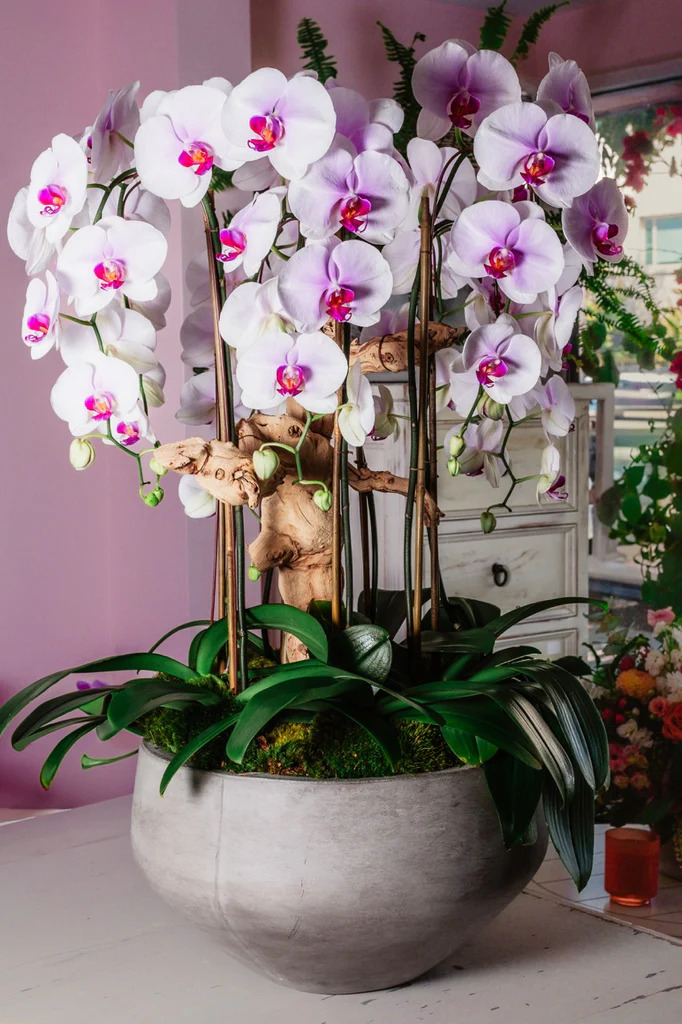
A cascading waterfall of delicate pink phalaenopsis orchids. Their petals, soft as silk and touched with a hint of blush, unfurl gracefully, creating a mesmerizing display of elegance. Check price at Orchid Republic.
A general rule of thumb is to water deeply but infrequently. For most orchids, soaking the roots approximately once a week for 10-15 minutes and allowing them to drain completely works well. However, always check the potting medium—if it’s still damp, wait a few more days. To ensure your water is free of harmful chemicals, consider using an under the counter or whole house reverse osmosis water system, especially if your tap water is hard or chlorinated. For more detailed guidance on watering specific orchid types, visit our Ultimate Guide to Watering Orchids.
Always be careful not to allow water to pool in the petiole area where the leaves and stem meet as this can lead to rot and fungal diseases.
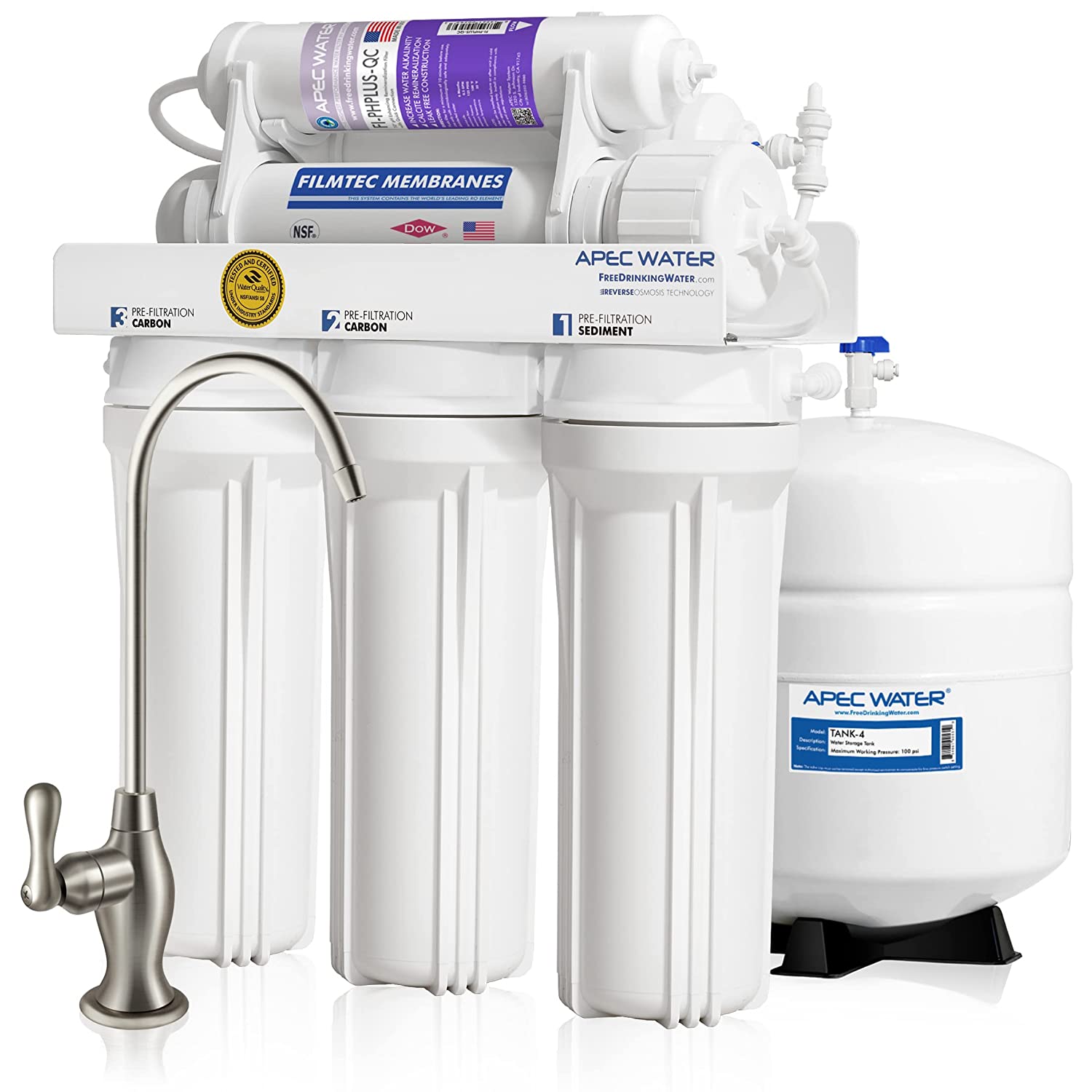
APEC Water Systems Top Tier Supreme Certified Alkaline Mineral pH+ High Flow 90 GPD 6-Stage Ultra Safe Reverse Osmosis Drinking Water Filter System (Ultimate RO-PH90)
Creating the Perfect Humidity for Your Orchids
Orchids are tropical plants that thrive in humid environments, ideally between 50% and 70% humidity. If your home tends to be dry, especially during the winter months, you should take steps to boost the moisture levels around your plants.
One of the simplest solutions is to use a tabletop humidifier, which efficiently adds moisture to the air and creates an ideal environment for your orchids. For a more visually appealing option, consider adding a small indoor waterfall near your plants. Not only will it increase humidity, but the gentle sound of flowing water can also create a serene, spa-like atmosphere in your space. Another easy trick is to place a tray of water with pebbles near your orchids—evaporation will naturally raise the humidity levels.
For those with a spacious indoor garden or conservatory, an indoor-outdoor waterfall fountain can serve as both a stunning centerpiece and a captivating conversation starter.

- Durable cement construction for all-weather indoor/outdoor use
- Built-in rain and UV protection prevents fading
- Modern tiered bowl design for calming water flow
- Maintains 60-70% humidity – ideal for orchids
- Integrated LED lighting enhances nighttime ambiance
- Water sounds promote orchid relaxation (studies show plants respond to vibration)
- Vertical garden feature holds air plants or mounted orchids
- Versatile placement for home, garden, patio, or office
- Easy to assemble and low-maintenance design
Feeding Your Orchids: Providing The Right Nutrients
Orchids, like all plants, need the right nutrients to thrive and produce their intricate flowers. However, their unique nutritional requirements mean that standard fertilizers aren’t always the best fit. That’s where specialized orchid fertilizers come in—urea-free and expertly balanced with nitrogen, phosphorus, and potassium, they provide the precise nutrition your orchids need to flourish.
The timing and frequency of fertilizing depend on your orchid’s specific growth cycle. For many orchids, a diluted solution—about 1/4 strength—applied weekly during active growth phases works well. This gentle feeding approach mirrors how orchids naturally absorb nutrients in their native habitats, where rainwater delivers trace minerals and organic matter to their roots. Always be mindful not to over-fertilize, as too much can harm the roots and reduce flowering. For more in depth advice read our detailed guide on how to fertilize orchids.
- Tailored for Orchids Specifically formulated by Michigan State University
- Pure Water Compatibility
- Balanced Nutrient Profile
- Urea-Free Formula
- Versatile and Easy to Use
Orchids and Temperature: Crafting the Ideal Climate for Growth and Blooms
Orchids are tropical plants that thrive in warm, stable environments, much like their natural habitats. To keep your orchids healthy, aim for daytime temperatures between 70°F and 85°F. While many orchids appreciate consistent warmth, some varieties, like Phalaenopsis, Cattleyas, and Dendrobiums, benefit from a nighttime temperature drop of 10-15 degrees to trigger blooming. This cooling period is essential during their pre flowering phase but isn’t necessary year-round.
If you live in a cooler climate, maintaining these ideal conditions might require a little extra effort. A programmable space heater can help regulate temperatures, ensuring your orchids stay cozy during the day. Just be sure to keep them away from drafts, air conditioners, and heating vents, as sudden temperature changes can stress the plants and disrupt their growth.
Orchid Care Tip: Did you know kelp seaweed can work wonders for your orchids? It’s rich in cytokinins, natural plant hormones that play a key role in orchid health. These powerful compounds stimulate cell division, enhance growth, and encourage orchids to focus on flower production. By incorporating a kelp-based fertilizer into your routine, you can give your orchids the extra push they need to produce bigger, more vibrant blooms.
If you have an orchid that’s been struggling to bloom, try adding kelp fertilizer to your watering routine in the months before its flowering cycle. It’s like giving your plants a backstage pass to their own floral show!

- Boosts Blooming with Natural Cytokinins
- Enhances Root Health and Growth
- Packed with Essential Nutrients
- Eco-Friendly and Sustainable
Fresh Air for Healthy Orchids: The Importance of Air Circulation
Proper air circulation is necessary for orchid care. Good air movement ensures your orchids stay healthy and vibrant, helping to prevent issues like mold and pests. By keeping the air gently circulating, you create an environment where your orchids can thrive
One of the easiest ways to achieve this is by using an oscillating fan. Set it to a low speed and position it to gently circulate air around your orchids without creating strong drafts. If you’re growing orchids in a dedicated space, consider adding a small indoor fountain or waterfall. Not only will the flowing water enhance air quality, but it will also bring a soothing, spa-like vibe to your growing area.
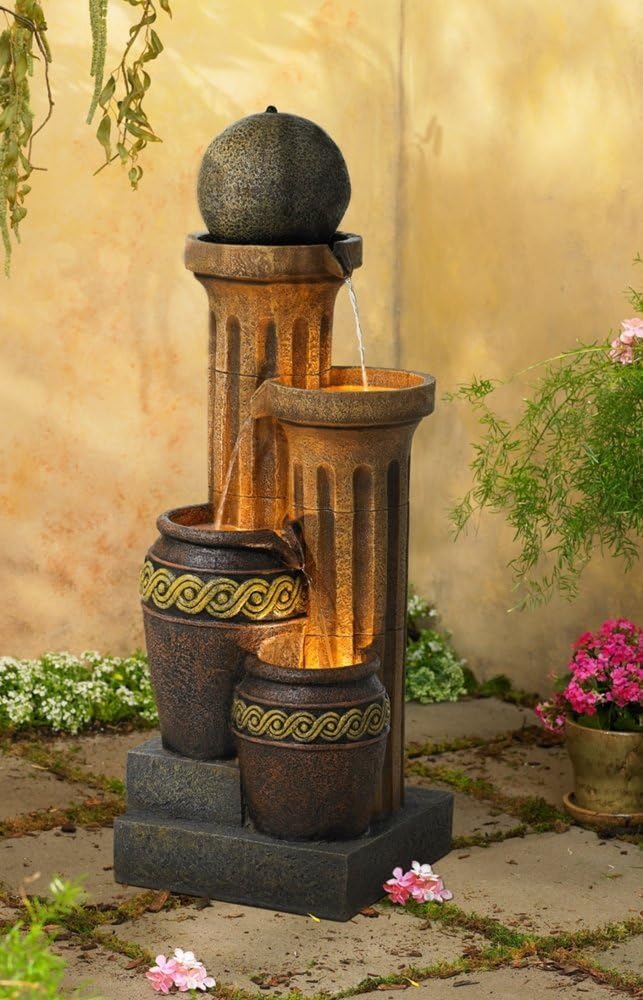
- 50" rustic fountain with LED lights and cascading water.
- Lightweight resin and stone construction, easy to move.
- Includes water pump, 3 LED bulbs, and 6-foot cord.
- Perfect for gardens, patios, balconies, or indoor spaces.
- Creates soothing ambiance with 4-tiered water flow design.
The Art of Pruning: Keeping Your Orchids Healthy and Beautiful
Pruning is a vital part of orchid care, helping to maintain their health and appearance. By removing dead or diseased tissue, you allow the plant to focus its energy on new growth and future blooms. It’s also an opportunity to shape your orchid and keep it looking its best.
Once your orchid has finished blooming, use precision pruning shears to trim the flower spike just above a node. This simple step encourages the plant to produce a new spike, setting the stage for another round of stunning flowers. Regularly check your orchids for yellowing leaves or dead roots and trim them as needed to keep your plants in top condition. Visit our Orchid Leaves Turning Yellow guide if you are concerned about a potential problem.
Maintaining the cleanliness of your orchid is equally important. Gently wipe the leaves with a damp cloth to remove dust and debris, which can block light and hinder photosynthesis. Always use sterilized tools when pruning to prevent the spread of disease and ensure your orchids stay healthy and vibrant.
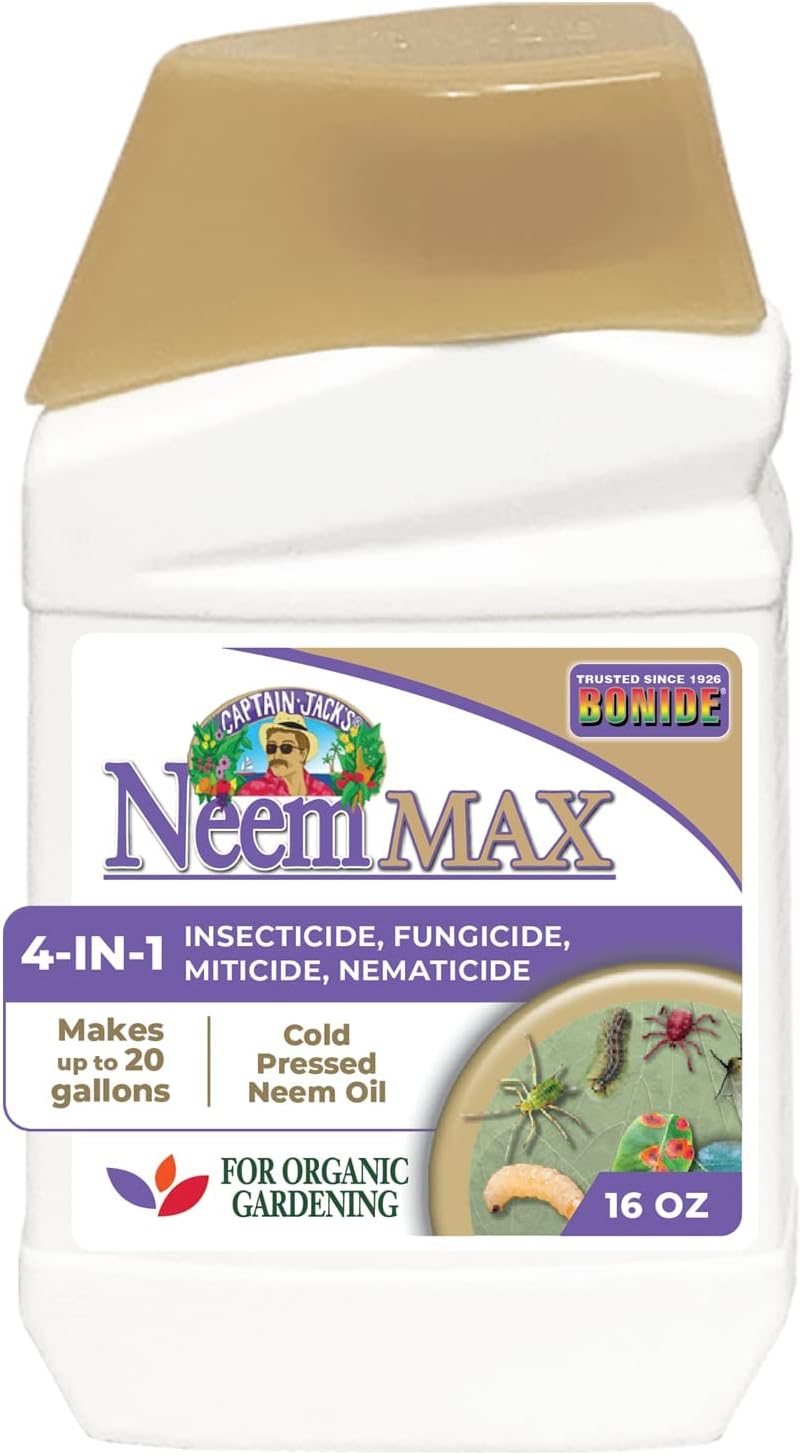
- For Organic Gardening
- Kills All Stages of Insects
- Use on Any Plant
- Use as Spray or Drench
- Concentrated Formula
Plants love Neem oil, watch them become invigorated after Neem treatment.
Protecting Your Orchids: Tackling Pests and Diseases Naturally
Even with the most attentive care, orchids can sometimes attract pests like aphids, mealybugs, or spider mites. The key to keeping these issues under control is early detection and swift action. Regularly inspect your plants for any signs of trouble, such as discolored leaves or unusual spots.
For a safe and effective solution, consider using neem oil spray. This natural remedy works wonders against most orchid pests and can be applied every few weeks as a preventive measure. If you notice symptoms of disease, such as black spots or mushy roots, isolate the affected plant immediately and treat it to prevent the issue from spreading. Click here for more information on pests and diseases.
The Essentials of Repotting Orchids: A Refreshing Routine
Repotting is a crucial part of orchid care, typically needed every 1-2 years or when the roots outgrow their container. This process not only refreshes the growing medium but also gives the roots more space to expand and prevents the buildup of harmful salts and minerals.
Orchids are typically potted in well-draining growing media consisting of bark, a combination of bark, sphagnum moss and perlite or LECA. They should be potted snugly in their pots, and the pot should not be too big, as this can cause the roots to stay wet for too long.
When it’s time to repot, choose a high-quality orchid potting mix designed for excellent drainage and aeration. Carefully remove the old medium, trim away any dead or damaged roots, and place the orchid in its new pot. Learn more about root care here. After repotting, water thoroughly and give the plant time to settle into its fresh environment. For a step-by-step guide, check out our Guide to Repotting Orchids.
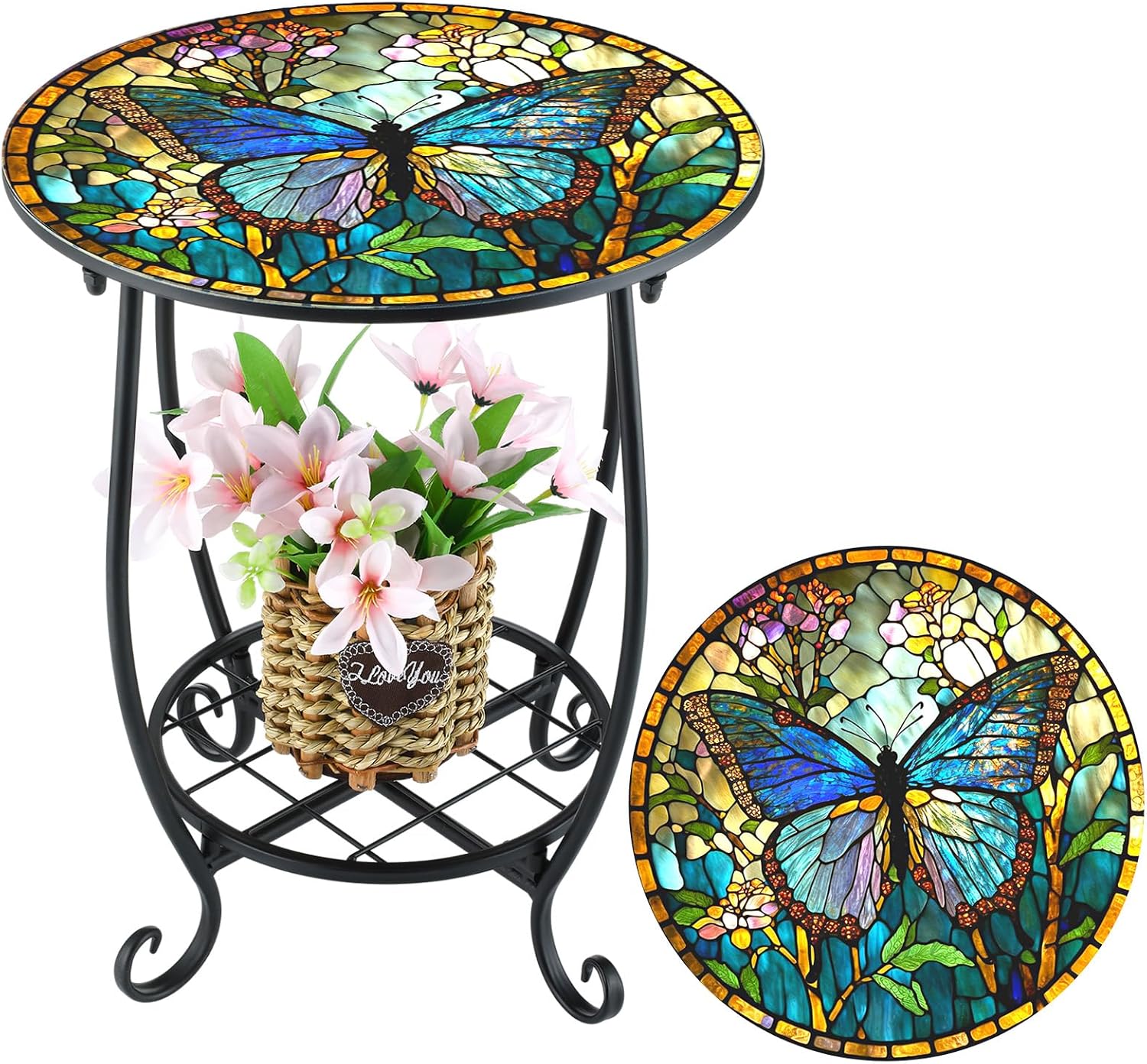
14" Side Table Round Small Mosaic Patio Accent Table Indoor End Table Plant Table Metal Table Coffee Tea Table for Yard Porch Garden Patio Living Room, Bedroom (Butterfly Style)
Elevating Your Orchid Care Experience
Caring for orchids goes beyond simply keeping them alive—it’s about creating an environment where they can truly flourish. Incorporating an aromatherapy diffuser into your space can enhance both their growth and your enjoyment. The CAFFIA Vintage Ultrasonic Diffuser offers a stylish solution with its silver-plated glass design, 7-color LED lighting, and quiet cool mist diffusion. This 280ml humidifier doubles as an essential oil diffuser, infusing your orchid area with soothing scents like lavender or eucalyptus while maintaining optimal humidity. With automatic shut-off and timer settings (1-5 hours), it’s a perfect blend of elegance and functionality.
For those looking to optimize orchid care even further, a smart garden system can help monitor light, humidity, and temperature, ensuring the perfect conditions for your orchids to thrive effortlessly.

- DREAMHOME: YOUR GUIDE TO A PERFECT HOME
- Discover the secrets of interior decorators!
- Decorate your home like the pros!
- Guide to interior design principles.
- Stylish home decoration ideas.
Transform Your Home with Thriving Orchids
Caring for orchids may require some effort, but the rewards are well worth it. With the right knowledge and tools, you can cultivate breathtaking orchids that add elegance and serenity to your living space. By integrating essential products like grow lights, humidifiers, and reverse osmosis systems, you’ll streamline your orchid care routine and create the perfect environment for your plants to flourish.
There’s no better time to start than now. Embrace the world of orchids and turn your home into a vibrant, blooming sanctuary that inspires joy and tranquility every day.
Recommended Products for Orchid Enthusiasts:
- Full-spectrum LED grow light
- Smart grow light with adjustable settings
- Reverse osmosis water system
- Whole house reverse osmosis system
- Tabletop humidifier
- Indoor waterfall fountain
- Specialized orchid fertilizer
- Oscillating fan
- Precision pruning shears
- Neem oil
- Orchid potting mix
- Relaxing essential oil diffuser
- Smart garden system
By integrating these products into your orchid care routine, you’ll not only simplify the process but also elevate your indoor gardening experience.
We hope you found this information useful and if you like Heavenly Orchids, please join our mailing list for monthly updates.
